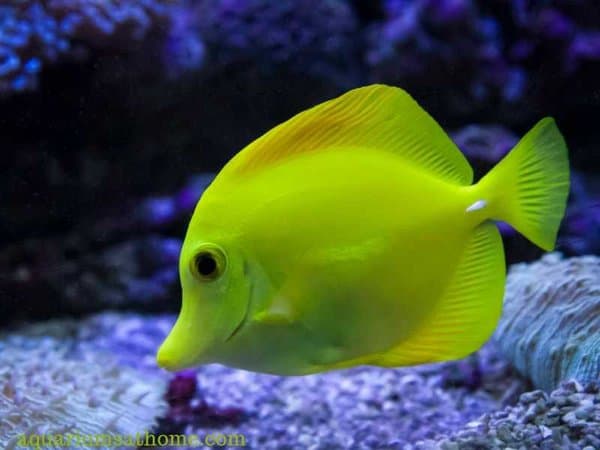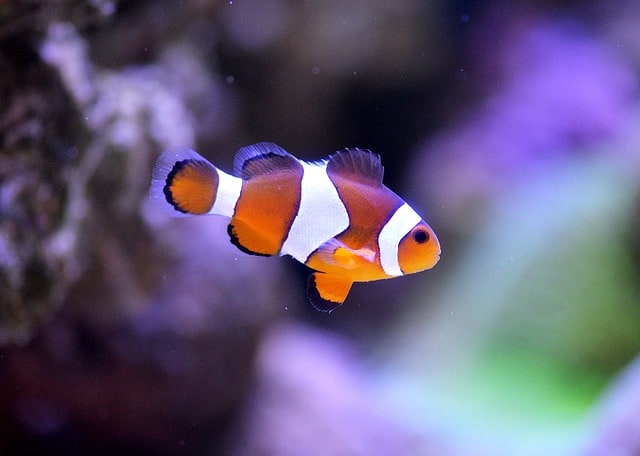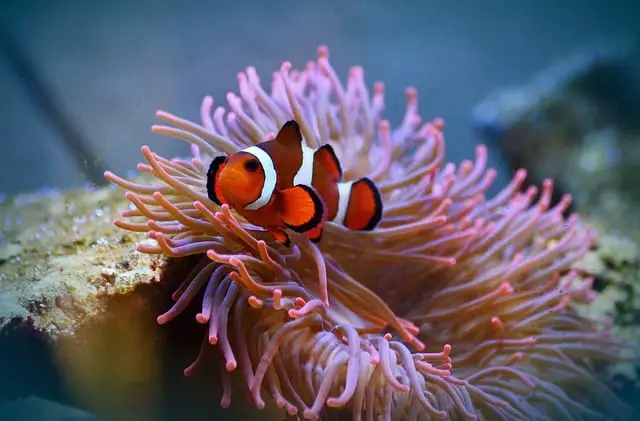Yellow tangs are one of the most beautiful and vibrant saltwater aquarium fish you’ll ever see. They have a very distinct shape and are extremely graceful when swimming throughout the fish tank.
If you have a very large marine tank, whether it be a fish only or coral tank, you can enjoy these bright yellow fish.
There’s a growing interest in breeding yellow tangs nowadays because of the ban that the state of Hawaii has implemented. All aquarium fish collecting permits have been banned [1]. This is an effort to preserve and prevent extinction of local fish that are endemic to the area.
Breeding yellow tangs in captivity hasn’t been a successful venture by most hobbyists. This doesn’t mean it’s impossible and you shouldn’t try.
I believe that with the correct water conditions, tank size, and food types you can “potentially” have some success breeding these beautiful fish.
I’ve done my research and am now ready to share with you what I believe to be the right path to successfully breeding yellow tangs in your home aquarium.
Let’s begin!
Yellow Tang Natural Habit and Best Water Conditions
When looking at breeding, you must first understand the wild, natural aquatic habitat of the fish.
Most of the yellow tang population in the wild resides in the Pacific Ocean around the Hawaiian Islands as well as the Atlantic Ocean near Florida’s coast.
There have been reports of the yellow tang also being found in the Indian Ocean and the South China Sea. Primarily however, they’re found around Hawaii and Florida.
Yellow tangs typically originate amongst coral reefs therefore, their natural habitat should try to be replicated in your marine tank.
Here are the ideal water parameters if you want to have a healthy and thriving reef tank that could house yellow tangs in the hopes of having them mate.
Salinity/gravity 1.023 to 1.025.
Water temperature 72 to 82 keeping the temperature on the high end, if possible.
PH 8.0 to 8.5.
Alkalinity 8 to 12 dKH.
Ammonia near zero or undetectable.
Nitrite should also be near zero or undetectable, if possible.
Nitrate can be <1 ppm.
Phosphate <0.2 ppm.
Calcium 350 to 450 ppm.
Magnesium 1250 to 1350 ppm.
Iodine .06 to .10 ppm.
Strontium 8 to 14 ppm.
Now some of the above elements are obviously to feed and nourish your reef tank. The idea here is to ensure your tangs feel as much at home in your fish tank as they would out in the Pacific Ocean.
If you don’t have corals and live rock, then ignore the appropriate elements above. Your tank should include some rock structures if you want to breed tangs.

Yellow Tang Diet to Encourage Breeding
As important as it is to achieve the ideal water parameters for your fish, it’s equally important to get the diet just right.
Yellow tangs are omnivorous. These fish eat zooplankton, algae, crustaceans, detritus, dried seaweed, green vegetables (blanched are best) such as broccoli, zucchini, lettuce, spinach. Vitamin-enriched flakes and dried shrimp are also something to feed your yellow tangs. You can try frozen shrimp as well.
The important thing here is to feed your tangs a varied diet and have some lettuce or seaweed available for them to always graze on. Change out the lettuce regularly to keep the tangs coming back for more.
How to Sex Yellow Tangs for Breeding
Sexing yellow tangs is difficult but not impossible if you have two or more tangs in the same tank to have a look at. Identifying the sex of the tangs and whether they’re ready to breed are important to determine if you don’t want to miss their breeding window.
Female tangs will be larger than males when fully grown. Knowing how old your tangs are will make it easier to identify their gender.
When male tangs are ready to breed, they have a couple of identifiers that make them stand out against the females. Males will start shimmering and even slightly change color. The color changing of an adult male is an obvious telltale that they’re ready to mate.
Lastly, male yellow tangs have slightly raised scales on their dorsal fins. This means they’re getting ‘frisky’ and ready to procreate.
The Best Tank Size for Breeding Tangs
I see a lot of recommendations online to keep tangs in a 50-gallon tank. Unfortunately, 50-gallons isn’t big enough for one tang let alone two that want to breed.
I’m recommending (at minimum) you have two tangs in a 75-gallon however, though I’d prefer they be kept in 100-gallons for breeding.
Setting up a Fish Tank for Yellow Tangs to Breed
Aside from the recommendations above on water parameters and tank size, I’d have only your breeding yellow tangs in the aquarium if you want to have success. Take away all stresses and you increase chances for breeding.
Once you’ve identified the fish are starting to mate, you might want to dim the lights a bit or use a blue light to extend the nighttime routine until you know they’re done.
What to Feed Yellow Tang Fry (baby tangs)
If, by chance, you’re successful in breeding your tangs, you should know that the most crucial part of this process isn’t the breeding, it’s the survival of the baby fish.
Feeding your baby tangs is important. Feed them 2 to 3 times per day. Try brine shrimp crushed up, flakes for marine fish crushed up and you can also try boiled egg yolk. The egg yolk is a tricky one, just make sure you see the fry eating something.
You should also move the adult tangs out of the breeding tank, so they don’t eat their babies.
Final Thoughts
Yellow tangs are such a beautiful fish and a joy to have in a marine tank. The current cost to purchase yellow tangs has skyrocketed over the past few years so it’s no surprise hobbyists will want to try and breed them.
I know it’s hard to breed this variety of tangs, but it’s not impossible. I feel any experienced marine tank owner would have a chance of being successful.
Take your time making sure the tank parameters are ‘spot on’ and ensure the fish are getting the diet they need.
Good luck!
Recommended Articles
Are Yellow Tangs Hard to Keep?
Are Blue Tangs Difficult to Keep?
Reef Safe Fish for a 55 Gallon Tank?
References
[1] https://www.hpu.edu/oi/yellow-tang.html




